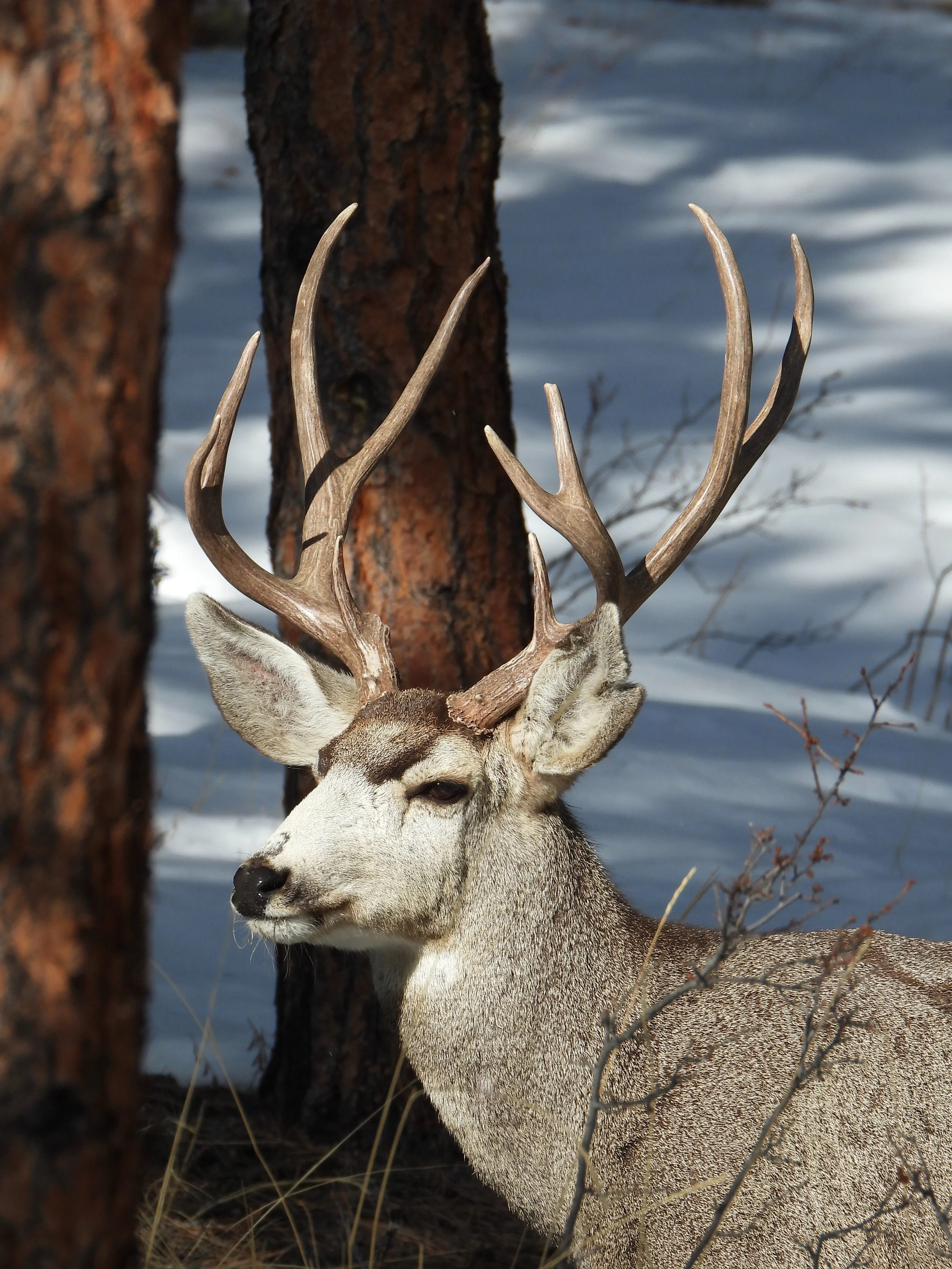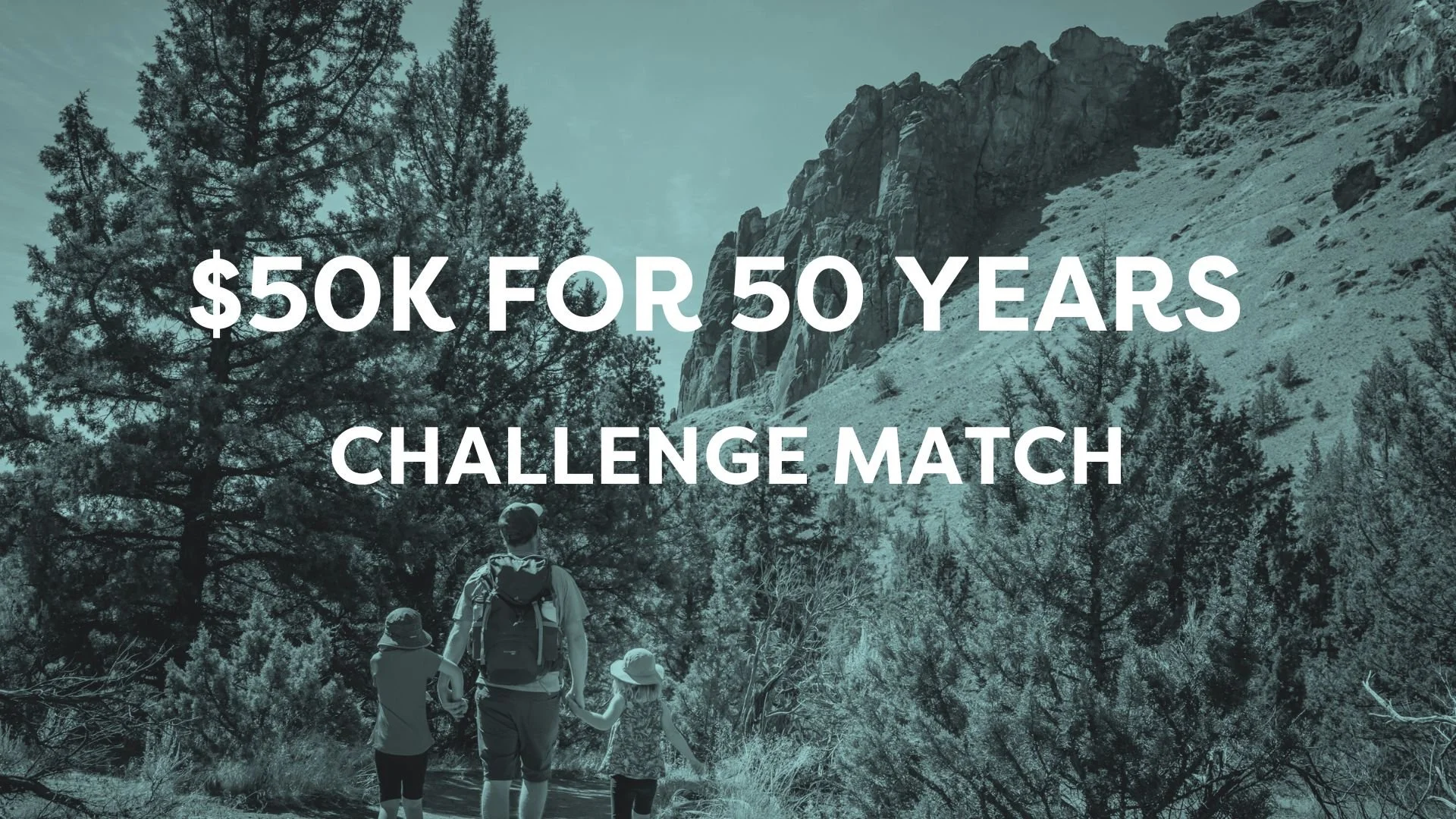Losing migration corridors
Christie Greene
LandWatch objects to Deschutes National Forest’s Klone Project
Hiding cover is an essential part of our forested landscapes in Central Oregon. The term refers to the density of trees and vegetation that provides a vital habitat component for wildlife seeking refuge from threats like human disturbances, poaching, and predators.
Reducing hiding cover to 13% in migration corridors is a drastic loss of habitat. This is only a fraction of the necessary forest cover mule deer need to survive.
That’s why we submitted a formal objection to the Forest Service’s Klone Vegetation Management Project on the Bend Fort Rock Ranger District of the Deschutes National Forest.
The Klone Project covers 34,626 acres on the eastern edge of Newberry Crater, south of Bend, and east of Sunriver along Highway 97. This area includes important mule deer migration corridors and summer range habitat.
A drastic loss of habitat function
An example of an area that has undergone thinning that reduces hiding cover
Under the existing Deschutes National Forest Plan, the Forest Service must maintain 30% hiding cover in mule summer range. However, the Klone Project would dramatically reduce hiding cover for mule deer below the current required standard, down to 21% across the project area and an alarming 13% cover in known migration corridors.
What is a Forest Plan? It’s a guiding document under the National Forest Management Act (NFMA) that outlines certain standards, goals, and policies for a national forest.
Over just the past ten years, the mule deer population in the Klone Project area has declined by an alarming 62%. This project will further stress a population in crisis for decades to come.
A wildlife crossing at risk
The Hwy 97 crossing near Sunriver: SimonWray, ODFW
The project is particularly worrying because it would threaten years of work to create safe passage for wildlife along Highway 97. A few years ago, the Oregon Department of Transportation completed two huge infrastructure projects near Sunriver. Two wildlife under crossings were built to help mule deer safely migrate between winter and summer habitat areas. Without access to these crossings, the species' survival could be in jeopardy due to their limited ability to cross the highway safely.
Studies conducted throughout the project area found that two of the top three deer mortality causes were related to roads, including high traffic issues, road density, and poaching (EA - 207).
These wildlife crossing projects are some of the first dedicated crossing structures in Oregon. They represent a considerable public investment in our region’s mule deer and habitat, particularly in the Klone Project area. To date, millions of dollars have been invested in addition to significant in-kind contributions from conservation partners and the public.
Did we invest millions of dollars in wildlife crossings for nothing? It's our hope the Forest Service will consider our objection points in earnest and make a final decision that prioritizes the preservation and restoration of mule deer habitat within the project area.
Want to know the details?
Donate to support our work
With your continued support, we’ve been able to defend our oldest trees and wild landscapes for decades. Your donation to LandWatch will be doubled as a part of our $50k for 50 Years Challenge Match, thanks to two generous donors.


